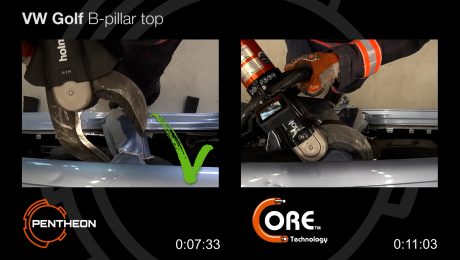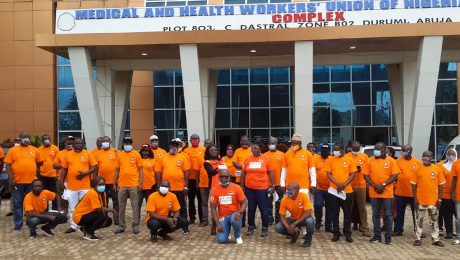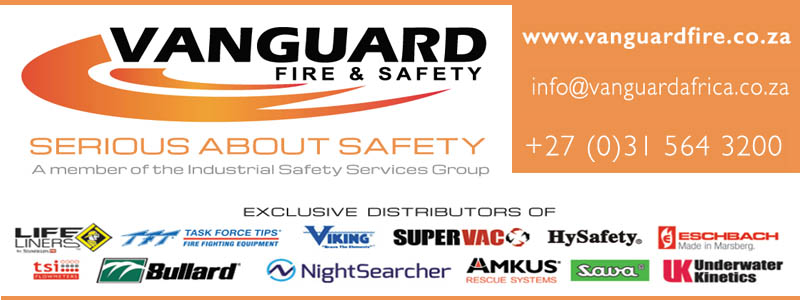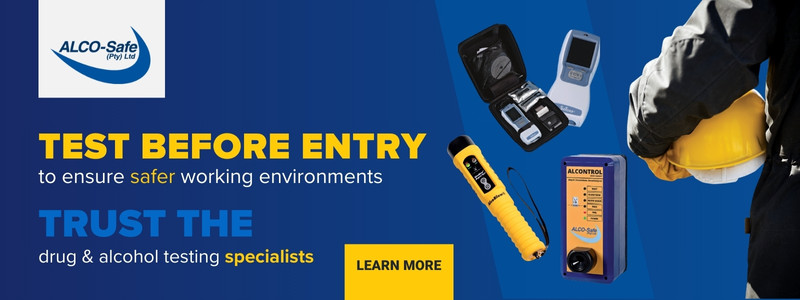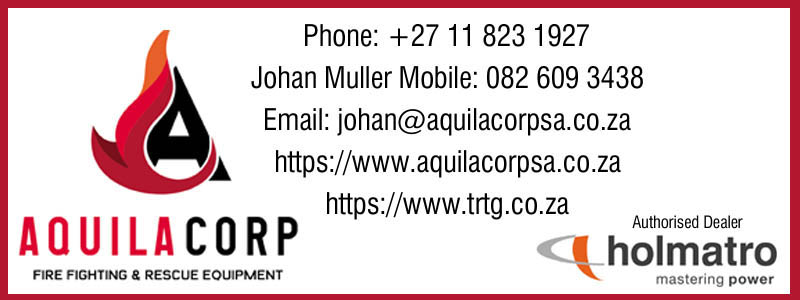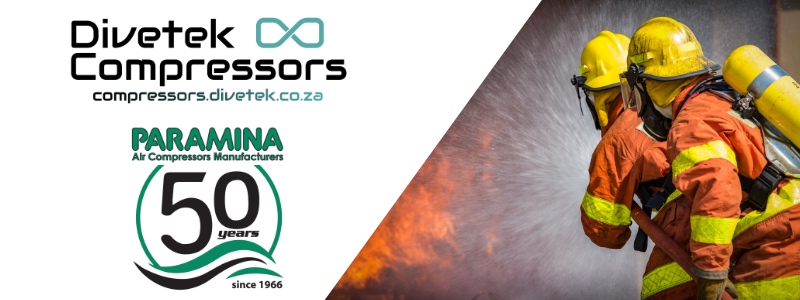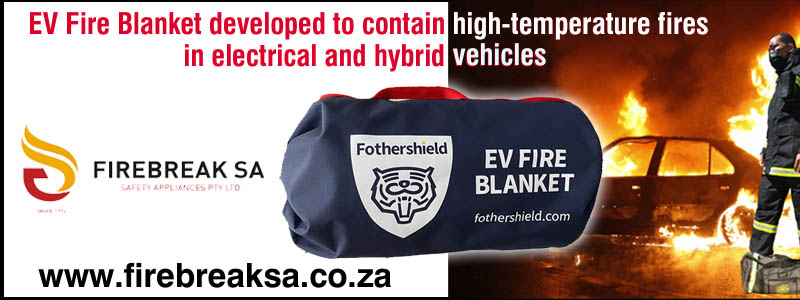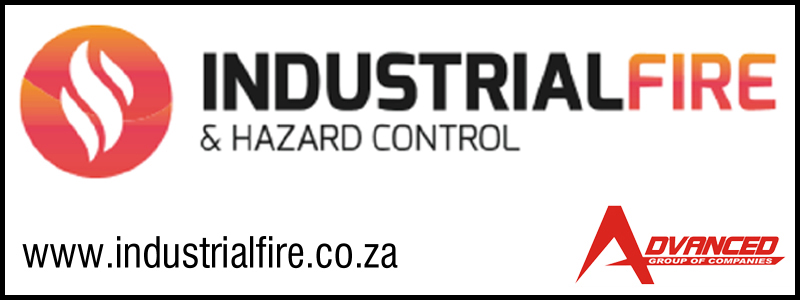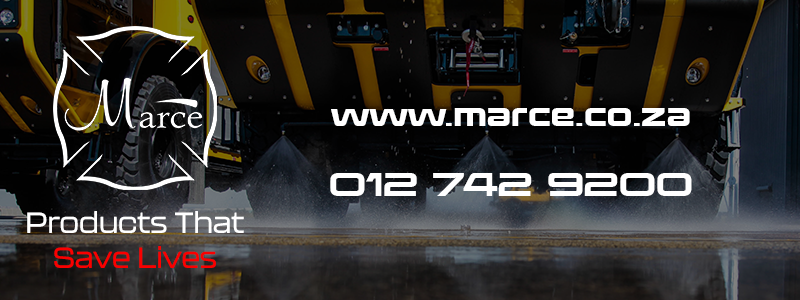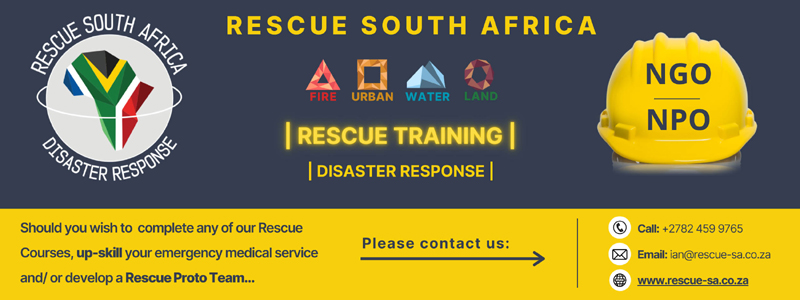Male patient rescued from a collapsed trench in Hammanskraal
Issued by the City of Tshwane Emergency Services Department.
The City of Tshwane Emergency Services Department responded to a trench collapse incident near an Eskom substation close to the Traffic Department in Hammanskraal on 1 February 2021 at approximately 11:30. Firefighters and paramedics arrived at the scene to find a 29-year-old male patient still inside a three-meter-deep trench.
According to information received at the scene, the patient, a worker for a company contracted to Eskom, was working inside the trench when part of the trench wall collapsed on his leg. He sustained a left femur fracture but was not trapped upon the arrival of emergency services.
Firefighters and paramedics had to use a hydraulic crane from a truck to rapidly evacuate the patient from the trench. The patient was airlifted to Netcare Milpark Hospital by a Netcare helicopter at around 13:25 after receiving treatment from paramedics at the scene.
Report a fire or life-threatening emergency on 107 or alternatively call 012 358 6300/6400.
- Published in Uncategorized
Obituary – Andrew Charnaud
Andrew Charnaud was a great doyen of the PPE&C industry and extremely well respected by all who knew him.
His passing is a great loss to his wife Fiona, his daughter Nicky, son Robin, their partners and three beautiful grandchildren.
The industry, his colleagues, suppliers and his friends have lost a true icon.
Andrew passed away at age 68, from COVID-19 related complications on 24 January 2021.
He will be sorely missed by all, as his larger-than-life personality and phenomenal sense of humour touched all of those who knew him.
His technical knowledge and his innovative ability were highly respected all over the world, and he always had a wealth of knowledge to share.
Andrew and Fiona began manufacturing Protective wear 01 April 1975 in Durban.
The company expanded rapidly, and in 1985 they set up a training factory in Ezakheni Ladysmith. The following year they moved the industrial workwear and coating plant to Ezakheni from their Pinetown premises.
The business continued to grow from strength to strength and is now recognised as a leading international supplier of high performance PPE&C exporting to over 57 countries around the world, as well as being a prominent local supplier.
Andrew’s passing will leave a beacon of light for all in the community as well as the industry, and this can be seen in the touching and heartfelt messages the family have received from around the world:
Hugh Hoagland
“His company led the area in innovation. Thank you, sir, for the service and the lives you helped protect while you were here.”
Paul Castelli
“This is a deep loss for the industry, family and friends.”
Jeff Morris
“Andrew’s passion and entrepreneurial spirit will be missed. A true leader in the global PPE space.”
Kailash Rathod
“Thanks for your contributions towards safety.”
Hugh Hoagland
“His company led the area in innovation. Thank you, sir, for the service and the lives you helped protect while you were here.”
Paul Castelli
“This is a deep loss for the industry, family and friends.”
Jeff Morris
“Andrew’s passion and entrepreneurial spirit will be missed. A true leader in the global PPE space.”
Kailash Rathod
“Thanks for your contributions towards safety.”
Ajen Maharaj Country Leader: South Africa
DuPont Performance Specialty Products (Pty) Ltd
‘On behalf of DuPont, I wanted to convey our deepest condolences on the news of the passing on ofAndrew! We competed in the market place, and I had the utmost respect for the passion and drive of Andrew. He was an icon in our industry and will be remembered as such.’
Tom Andrews
‘Mr Charnaud was a true gentleman of our industry and his knowledge of PPE was unmatched.
He brought so much knowledge to the safety industry and helped educate so many people to protect their workers.
Mr Charnaud helped make the world a better place, and he has ensured many people return home safe to their families everyday.
AJ Charnaud is a world famous company that you have all built and represents a lifetime of achievement.’
Paul J. Olson – Managing Director East Hemisphere
Red Wing Shoe Company
‘Please accept my condolences on behalf of the Red Wing. Andrew was a man who held great passion for the safety industry and his expertise was unrivaled. He was the consummate professional and made our industry better due to his ethics, innovation, and his steadfast stance on upholding standards in everything he represented. He built AJ Charnaud into a global respected safety company. Our industry has lost a great contributor and a first-class individual!’
- Published in Uncategorized
Speed Comparison Video: Holmatro Pentheon Tools
The recently launched Holmatro Pentheon Series are the fastest rescue tools on the market. Used in situations where every second counts that’s a big advantage. But how much faster are they really? And how do you make a fair comparison to other available rescue equipment?
Speed Comparison Test
We compared the speed of the new PCU 50 Pentheon cutter with two similar Holmatro cutter models:
- CORE cutter CU 5050 i, with a hydraulic hose and a pump
- Cutter GCU 5050 i EVO 3 from our 2018 range of battery-powered rescue tools
For this test we used the bodies of the new VW Golf and VW Polo, both of which have heavily reinforced B-pillars. We cut these pillars at the exact same heights, on both sides of the cars.
The result? The Pentheon cutter proved to be much faster indeed than both comparable models. Convince yourself and watch the video.
Find out more about the new Pentheon Series and the people they were designed for on
Convince yourself and watch the video. =
holmatro.com/pentheon
- Published in Uncategorized
RESCUE TRAINING SIMULATION CENTRE
GROUND BREAKING Training centre for teaching, learning, assessment and research
In October 2020, the University of Johannesburg broke ground for a new Rescue Simulation Centre on their Doornfontein Campus. The centre has been designed to cater for teaching, learning, assessment and research of a multitude of specialised rescue disciplines.
The four-storey structure will include a five-metre-deep pool for aquatic rescue and survival training, helicopter underwater egress/escape training (“HUET”), and dive rescue.
Fifteen metres above the pool, a helicopter fuselage suspended on a gantry crane will allow for both “wet” and “dry” hoist training and can be adapted to provide a platform for safety training around rotor-wing aircraft and helicopter-based emergency care.
Within the basement of the structure, an urban search and rescue area will be created with space for configurable confined space tunnel systems, sacrificial concrete slabs, technical search props, shoring jigs and heavy lifting props.
The confined space tunnels will be linked from the basement to the upper 384m2 open area. This will provide an area for the teaching of high angle rescue, hazardous materials, motor vehicle rescue and trench rescue.
Disaster and mass casualty preparedness, innovation and training will also be catered for in this centre. This would include tracking of biohazardous substances through GloGerm™ technology from field based care into the, already established, Clinical Simulation Laboratory. This would be especially pertinent for training and research during the current COVID-19 crisis.
The entire simulation centre can be made dark, with wind and rain simulators that aim to increase the fidelity of the rescue and patient simulations. There will be two dedicated lecture venues, three offices and ablution facilities with showers and toilets for the centre.
The Department of Emergency Medical Care expects the project to completed by the end of 2021.
- Published in Uncategorized
Patient safety depends on the safety of healthcare worker
The safety of healthcare workers is core to good patient care – if healthcare workers aren’t protected good treatment outcomes could be jeopardised.
Republished with thanks from African OS&H September/October 2020. www.safety1st.co.za
Written by Ehi Iden President OSHAfrica, Ambassador, Patient Safety Movement Foundation
As we join the rest of the world to mark the World Patient Safety Day 2020 adopted at the 72nd World Health Assembly Resolution – WHA 72.6 “Global Action on Patient Safety” in May 2019, it is important to reinforce the fact that both the safety of the healthcare workers and that of the patients should be protected. Owing to the COVID-19 impact on the health and safety of the healthcare workers globally, the need to integrate these two issues into one for global discussions became obvious.
The World Health Organisation (WHO) has chosen a very apt theme for this year’s event “Healthcare Workers Safety: A Priority for Patient Safety”, this could not have come at a better time. This event was organised this year in Nigeria by Occupational Health and Safety Managers (OHSM), Medical and Health Workers Union of Nigeria (MHWUN), OSHAfrica, International Trade Union Congress (ITUC-Africa), Nigeria Labour Congress (NLC), Patient Safety Movement Foundation (PSMF) and World Health Organisation (WHO).
According to the words of Florence Nightingale over 160 years ago, “the very first requirement of a hospital is that it should do the sick no harm”. As fresh as this statement remains today, the question on the lips of everyone is whether we still play by this rule in healthcare facilities? How comfortable are we when we send our loved ones to healthcare facilities for treatment? Do we still feel sufficiently safe in these facilities? These and many more questions are begging for answers.
Many factors contribute towards patient safety
As much as we advocate for the safety of patients, we need to remember that healthcare facilities are workplaces primarily, before being a place where patients receive care. The need to protect the health and safety of the healthcare workers should be a very important part of conversations surrounding patient safety. The truth is, if we cannot guarantee the safety of healthcare workers, our hopes of patient safety and good treatment outcomes could be adversely jeopardised. The multidisciplinary nature and complexity of healthcare systems is a good place to start. Good treatment outcomes and the safety of the patients is a combination of many variables, it is difficult to give credit to only specific sets of professions within the system. Outcomes are always joint efforts of all employees within the facility, and this is one of the reasons we advocate that safety must start from the boardroom and move to the bedside, to the gate house and beyond.
According to WHO, healthcare facilities across the world employ over 59 million workers who are daily exposed to a complex variety of health and safety hazards.
Risks associated with workplace hazards
Stress
Lately, the issue of psycho-social hazards in the healthcare sector has grown exponentially and this burden has become a key indicator that could be attributed to the increasing risk of patient’s harm. We are all aware how the work shift pattern in hospitals has changed over the years, with the increasing rate of workplace violence against healthcare workers by patients and patients’ family members, the increasing rate of the number of patients per healthcare worker in most countries, the high rate of workplace stress and the increasing rate of accidental needle stick injuries among healthcare workers.
Sleep deprivation
According to Dr. Teryl Nuckols, an internist and Assistant Professor at David Geffen School of Medicine, University of California Los Angeles “Residents are working more than 30 hours at a single stretch and often times forgo sleep entirely”. In many healthcare systems across the world, there seems prohibition on “mandatory” healthcare worker overtime but nothing is seen on “voluntary” healthcare worker overtime.
Violence
Healthcare workers are at risk of violence worldwide, and between 8% and 38% suffer physical violence at some point in their careers. According to the 2014 report of the Bureau for Labour Statistics, 52% of workplace violence reported occurred in healthcare. An Emergency Nurses Association Survey of November, 2011 stated that one in ten emergency room nurses had suffered some form of physical violence in a period of one week. This is the enormity of the concern.
Poor structural design
The poor infrastructural design in many healthcare facilities poses certain levels of risks to healthcare workers, where a number of multiple floors facilities have neither elevator nor ramp. Healthcare workers may have to lift patients or in other instances support patients walking up or down steps, and this could lead to slips, trips and falls leading to both the healthcare workers and patients suffering bodily harm.
Advocacy for safety at the design stage of healthcare facilities is a new conversation coming out of this programme. A Bureau for Labour Statistics 2007 report stated that slips, trips and falls are the second most common lost work-day injuries in hospitals. It also added that incident rates for healthcare workers are 90% greater than the average for all private industries.
Duty of employers
We appeal to all employers of labour within the healthcare sector, the government and regulatory agencies to look closely into the issues of healthcare workers safety and protection.
The healthcare work environment is highly infectious and what is needed is mitigation in the form of safe process designs, improved hygiene practices, use of personal protective equipment and vaccination of healthcare workers against infectious diseases with existing vaccines.
In many cases, healthcare employers are never up to their responsibilities in this regard, showing a definite absence of duty of care.
Infectious risks
During the Ebola outbreak in West Africa 2014, over 378 healthcare workers were infected while the death rate amongst these workers was recorded as 196. When you juxtapose that with the report from the World Health Organisation (WHO) in July 2020, over 10,000 healthcare workers have been infected in Africa by COVID-19. That report also mentioned that only 16% of the 30,000 facilities surveyed had assessment scores up to 75%, indicating how vulnerable healthcare workers are to infectious risks in their workplaces and the need to fix this system towards improving the rate of patient safety and treatment outcomes.
According to Dr Moeti, WHO Regional Director for Africa, there is an urgent need for us to rethink the entire process, “the doctors, nurses, cleaners and many other groups of workers in healthcare sector are our mothers, brothers, sisters and loved ones” and the need for them to have a sense of protection and care is our collective responsibility.
The world is already experiencing a high level of shortage in healthcare workers and the increasing rate of harm, poor welfare and absence of a social safety net and protection will further increase the shortage of healthcare workers. This contributes towards making the sector unattractive for new employees due to the prevalence of risks with the obvious lack of the culture of safety.
Conclusion
Our recommendations as we mark this year’s World Patient Safety Day starts with the advocacy for the right kind of leadership in healthcare systems globally, with empathy being an integral part of our health care systems.
The need to stop the existing defensive culture and replace it with a “just and transparent culture void of blame-game and owning up to responsibility when things go wrong. Remember, we are only human and everyone is fallible. “To Err is Human” according to the Institute of Medicine (IOM).
The advocacy for patient centred care is imminent, we need them to be at the centre of their care and involved in treatment decisions, as it’s all about their health and wellbeing.
The need to review existing health system legislation is important. We need policy makers to stand up for change, healthcare technology companies to design safe equipment using safe new technologies. We need healthcare providers to be the change through competency improvement and due consideration for patient safety so that patients and their relatives can experience that change.
We need to commit urgently to actionable plans. Remember, when we harm a healthcare worker or hurt a patient under our care, it is not just that healthcare worker or the patient that we hurt, we also hurt their family members.
In the words of a Nigerian songwriter, Time Dakolo “There is a cry from a mother who just lost another child” The question is, who is next in line? This is a question we must all find an answer to.
- Published in Uncategorized
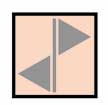

![Andrew Charnaud[1]](https://www.emsguide.co.za/wp-content/uploads/2021/02/Andrew-Charnaud1-460x260_c.png)
